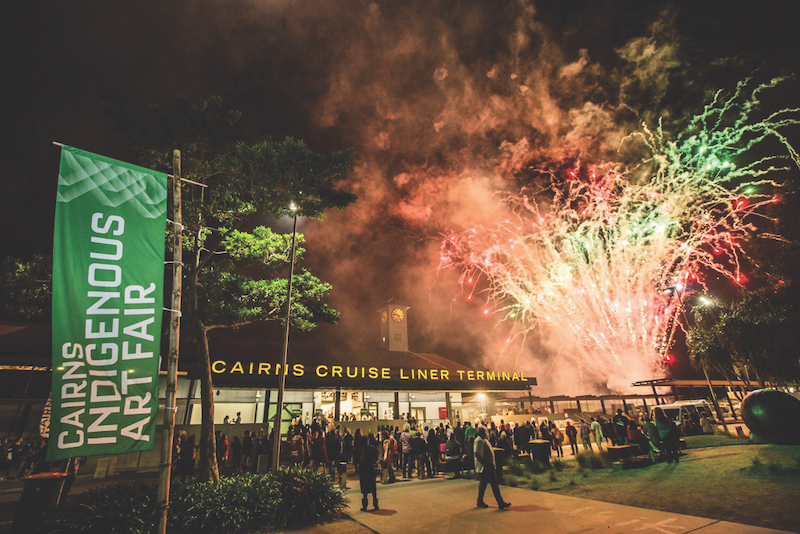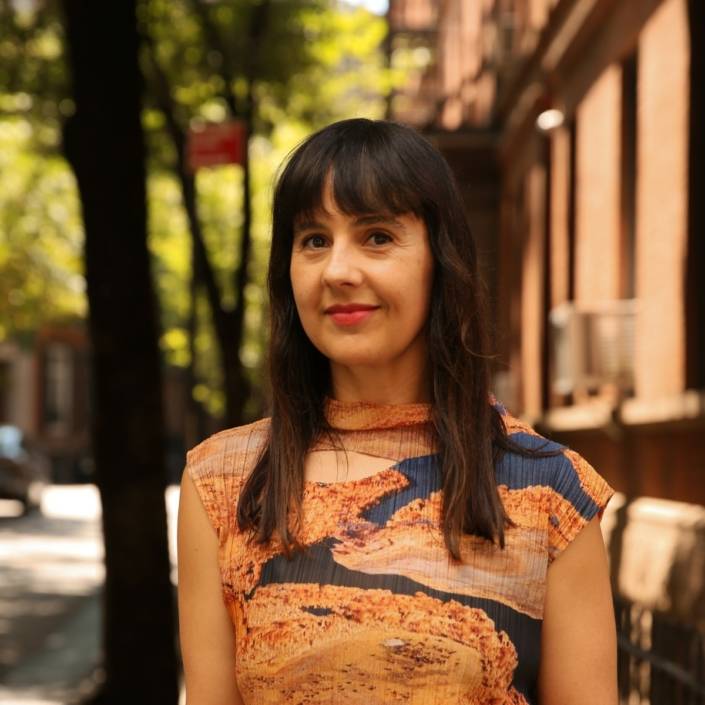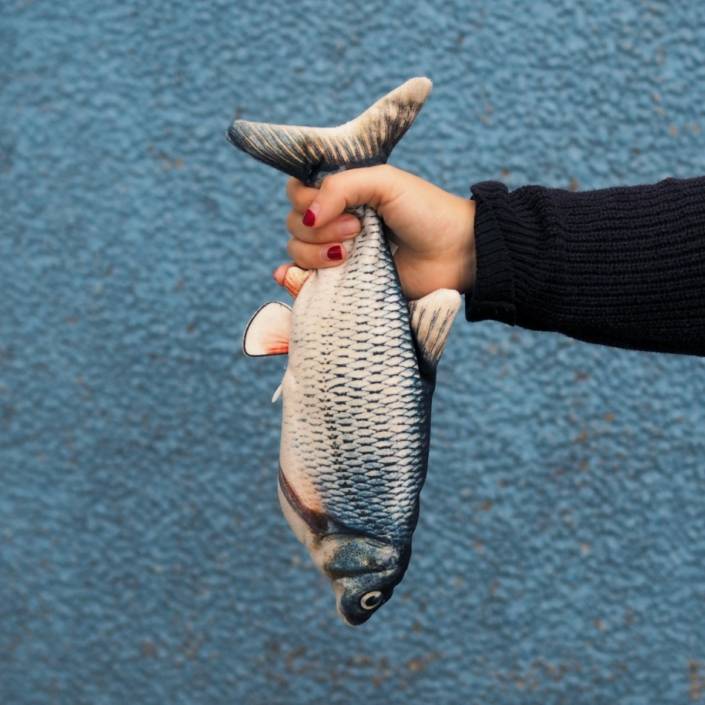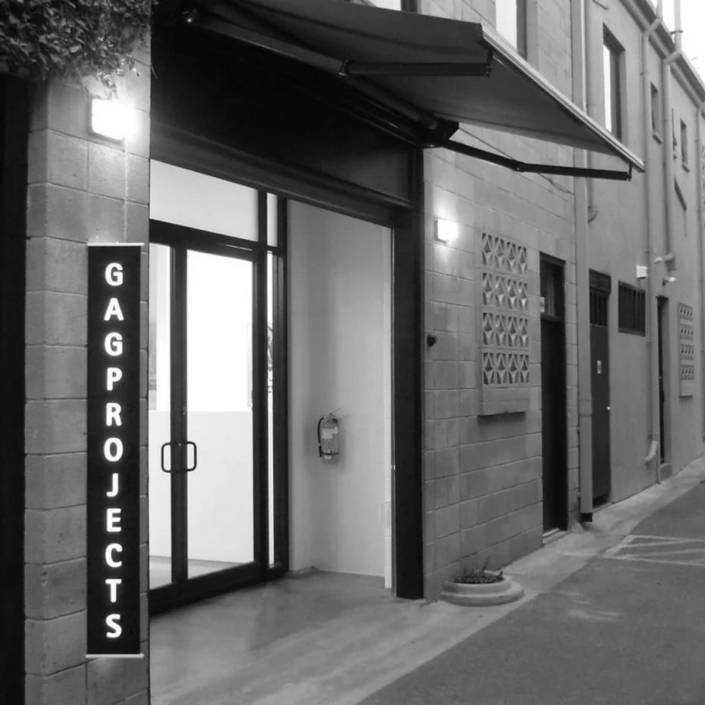CIAF 2019: A Decade On
In 10 years of growth and development, the ethos of Cairns Indigenous Art Fair remains resolutely unchanged.
Words: Tai Mitsuji
Anniversaries inevitably demand that we reflect on change and scrutinise development. They typically also demand that we ask questions, like “How far have we come?” and “What have we become?”.
But on the 10th anniversary of Cairns Indigenous Art Fair (CIAF), change is not the focus. This is because, as CIAF Chairperson Tom Mosby explains: “Nothing has really changed”. Of course, since its inception CIAF has matured, emerging as an annual art-fair-cum-festival with an established place in the tropical event calendar of Cairns, and the national art fair circuit. Since its inception in 2009, CIAF has attracted more than 280,000 visitors, represented more than 1,800 Queensland Aboriginal and Torres Strait Islander artists and sold more than $6.8 million of Indigenous art. Works purchased at CIAF are now held in collections in major institutions country-wide and internationally in Europe, North America, Britain and New Zealand. As such, CIAF has developed the ability to provide ongoing economic and promotional benefits, positioning the North Queensland region as a hub for innovation and excellence.
Yet, what Mosby is rightly referring to, is the unabating cultural richness of the fair. “The very first CIAF was about showcasing unique culture,” he says. “And people who attend CIAF still see things that they wouldn’t see anywhere else. CIAF is able to showcase Queensland Aboriginal and Torres Strait Islander art to a much broader audience.” Or put another way, CIAF is an art fair that has both changed and remained the same: the years have seen its profile, reach and sales grow, while its foundational ethos has stayed steadfast.
However, walking through CIAF one year can be a very different experience from strolling through the art fair the next. “You just don’t know what you are going to find,” Mosby says. “You walk in and [the exhibiting Art Centres, galleries and artists] are exploring all different kinds of mediums. What you may have seen last year may now be completely different – it’s that sense of discovery each year.” CIAF’s development as a festival of diverse events has created vast opportunity for cross-cultural exchange, and a deeper understanding of the place Aboriginal and Torres Strait Islander people have in the diverse, rich Queensland culture.
Artist and CIAF board member Arone Meeks believes that, in drawing a great swathe of cultural practitioners to a single point on the map, the art fair itself plays a crucial role in facilitating a crosspollination of ideas and methodologies. “It’s an opportunity to see where things are going, because there may be things at the fair that people don’t have access to in their communities,” he observes. “You also see people moving out of their comfort zone and really taking on big projects.” The fair is, of course, a critical site for commerce and the selling of goods; yet equally Meeks describes it as “a chance for mob to yarn and create dialogue”. Indeed, CIAF prides itself on its ability to maintain strong local and regional relationships with other communities and Art Centres, arts organisations, galleries, councils and creative groups, to ensure maximum opportunity for Queensland artists.
One of the things that truly differentiates CIAF from many of its analogues is this sense of communal ownership over the fair. “I think one of the beauties of CIAF is that the Aboriginal and Torres Strait Islander communities have really embraced it and see it as their festival as well,” Mosby says. “It’s not just presenting an art fair for a non-Indigenous audience to attend. It’s very much about engaging with the community.”
CIAF’s vision for the next four years will include increased focus on leveraging existing markets and expanding the opportunities for artists and performers to collaborate outside of Queensland, in both national and international exhibitions and cross-cultural collaborations with other First People’s communities.
In this respect, CIAF bucks the orthodoxy of the typical art fair and takes its focus beyond the buyer. “I think that there is pride within the community about it,” affirms Bob Manning, Mayor of Cairns and CIAF board member. “I often make comments about it, particularly to my wife. On the opening night, we go and we’re in the minority, yet it’s a great feeling.” Hearing this, one hopes that over the coming decades CIAF will continue to grow and evolve; at the same time remaining utterly unchanged.
This article was originally published in the CIAF 2019 special edition.
Image: Fireworks at Cairns Indigenous Art Fair. Courtesy: CIAF. Photo: Lovegreen photography.
ART FAIR SPECIAL EDITIONS
Special editions are free to read and can be viewed on IOS, Android, Kindle and Windows devices.









